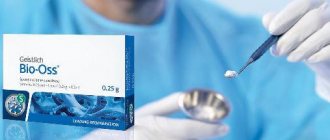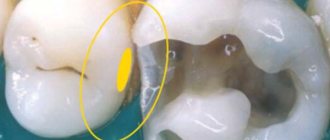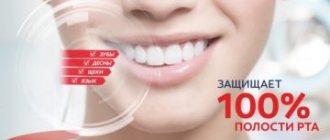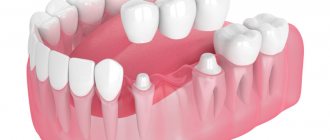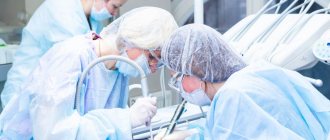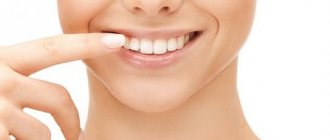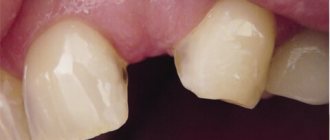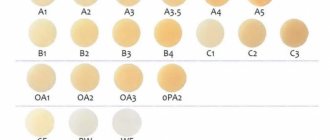Publication date: March 13, 2022.
Date the information on this page was updated: February 01, 2022.
TMJ dysfunction is a fairly common pathology these days, as it is largely caused by stress factors. Here it can be difficult to understand what is primary and what is secondary, because people with joint dysfunction usually come with bite pathology, pathology of the musculoskeletal system (curvature of the spine, neck). Therefore, joint treatment is a complex story. It happens that the primary pathology is a pathology of the joint, and sometimes it is the musculoskeletal system.
Comprehensive treatment of TMJ
When the doctor has determined the cause of the joint pathology, or causes, he determines the patient's readiness for a comprehensive treatment plan. In addition to the orthodontist, an osteopath or chiropractor may be involved, or even an orthopedist if more complex correction of the musculoskeletal system is required.
The patient should be aware that it is possible to straighten the jaw using a splint or splint, but this will not solve the problem of malocclusion. Orthodontic treatment will be required to correct the bite. If you have already had orthodontic treatment before, then it is more difficult to decide on repeated treatment.
Therefore, first the problem with the joint is solved using a splint or joint splint, then bite correction is carried out, and, if necessary, prosthetics. In parallel, work is underway with an osteopath to restore the muscular corset of the back and neck.
It happens that a patient refuses treatment with braces after the problem with the joint has been resolved. In this case, we warn him about the need to wear a joint splint constantly in order to avoid the recurrence of old problems with the TMJ. After all, a relapse can happen quite quickly due to stress.
A little about neuromuscular dentistry
Neuromuscular or, as it is also called, functional dentistry (NMS) is a whole science that studies malfunctions in the joints and muscles of the dental system. Based on the diagnostic results, industry experts suggest ways to solve the identified problem.
Under a malocclusion we are accustomed to accept the pathological arrangement of teeth. However, a certain violation of the aesthetics of the smile is the last consequence of improper interaction of the jaws.
Modern orthodontists offer to eliminate pathology by wearing various braces.
However, this treatment for malocclusion is incomplete, since disturbances in the functioning of the muscles and joints of the maxillofacial apparatus will not be corrected.
On the contrary, in some cases, artificially created pressure will aggravate the situation and the symptoms of the pathology described above.
Neuromuscular dentistry sets itself more global goals. CMS specialists care not only about the high level of aesthetics of the smile, but also about normalizing the relationship between the dentition, by restoring the proper functionality of the joints and muscles.
In European countries, this industry has existed for many years, but in our country there are still very few qualified NMS professionals.
But, according to experts, many orthodontists will adhere to the principles of work of neuromuscular dentistry specialists in the near future.
Additional information about functional occlusion is presented in the video.
What may be the symptoms of TMJ dysfunction?
- Tenderness or pain in the area of one or both TMJs at rest or when opening the mouth.
- Crunching, clicking, crepitation and other noises in the area of one or both TMJs when opening the mouth.
- History of TMJ injuries (previous), incl. dislocation, subluxation, chronic subluxation.
- Restrictions in the mobility of the TMJ, restrictions in opening the mouth.
- Excessive tone of the masticatory muscles, bruxism (“grinding” of teeth in sleep, at rest).
- Asymmetry of the chin, lips, lip frenulum, asymmetry of mouth opening, S-shaped opening.
- Suspicion of a forced position of the lower jaw.
Structure of the TMJ
The presence of one or more of the above symptoms may indicate TMJ dysfunction.
Traditional orthodontic treatment does not address TMJ dysfunction. During orthodontic treatment, the severity of dysfunction may not change, decrease or increase. At the moment, in the world scientific orthodontic literature there is no convincing data on the connection between orthodontic treatment and the condition of TMJ. Deterioration of the joint after treatment may have nothing to do with this treatment.
Note! Even in the absence of visible clinical manifestations of joint dysfunction, hidden disorders may occur that require special diagnostics to identify them.
If there is a forced incorrect position of the lower jaw, its position may change during the treatment process with changes and complication of the treatment plan (the need to remove individual teeth, increasing the duration of treatment). A reliably forced position cannot be diagnosed by traditional orthodontic methods; to verify its presence, as a rule, a special analysis is required (manual functional analysis, determination of the central relationship of the jaws), the use of a special articular splint for a period of several months, which, however, does not give 100 % guarantees.
To conduct a detailed articular diagnosis, explain the specifics of your case, and further manufacture an articular splint, you can make an appointment with an orthodontist who deals with the issue of TMJ dysfunction.
TMJ dysfunction is a chronic condition that can be compensated, but not cured (i.e., it is possible to eliminate symptoms, however, pathological changes in the joints, if they have already occurred, will most likely persist).
What happens if TMJ dysfunction is not treated?
If the dysfunction is not treated, the compensatory capabilities of the body may sooner or later be exhausted, the symptoms will worsen, the pathology will begin to progress, causing greater discomfort (sometimes for several years), thereby affecting the deterioration of the function of the dental system.
In order to try to prevent this and carry out treatment taking into account the individual characteristics of the structure and functioning of the temporomandibular joints, patients are usually offered the following approach.
Wearing
In general, experts recommend using an orthotic for several months. During this period, the structure prepares the muscles and joints for orthodontic systems or for restoration of dentition.
During the period of use of the orthotic, the symptoms of TMJ dysfunction weaken and almost completely disappear.
Wearing non-removable products is prescribed for the main treatment method in cases of serious impairment of neuromuscular functionality.
It is worth noting that the effectiveness of the structure’s operation is observed due to a reduction in the load on the mandibular joint and, accordingly, constant muscle relaxation.
When wearing the product, you must follow certain rules:
- The orthotic should be worn constantly, especially not removing the device from the oral cavity at night . The teeth of the lower and upper jaws must be in constant contact. At night, we involuntarily squeeze them when swallowing.
- You should not remove your orthosis before visiting the dentist. The structure should be in the mouth for half an hour at the time of sitting in the chair. This is exactly how much time is needed for the heads of the joint to take the correct specified position.
- Intentional pressure on the splint is not necessary if there is only a small amount of space between the teeth.
- The design must be present at every visit to a specialist.
- When removed, the product must be stored in a closed container filled with an antiseptic solution. This rule is very important, as this way you maintain the softness of the plastic.
- During hygiene procedures, it is necessary to brush not only your teeth, but also your orthotics. All you need is a regular brush and paste.
- Don’t forget to visit your dentist to correct the surface of the structure. Depending on the progress of treatment, the specialist may sand or layer the plastic.
It is necessary to follow the rules even if you do not observe significant changes.
Treatment method for TMJ dysfunction
1. Diagnosis of TMJ dysfunction.
- When diagnosing a joint in the clinic, a series of measurements and tests are carried out, all sensations in the joint area are recorded (discomfort, clicks, pain, deviation of the jaw when opening and closing), the difference in sensations in the right and left joint.
- The orthodontist also takes impressions of the jaws and takes photographs of the face and intraoral photographs, and also performs three-dimensional computed tomography of the face (3D CT); if necessary, the doctor can give a referral for an additional study - magnetic resonance imaging of the TMJ (MRI).
- Often, the orthodontist, in addition to manual functional analysis, conducts a visual assessment of: posture, symmetry of the shoulder girdle, shoulder blades, hip bone structures, etc., performs the necessary tests and photographs. Based on the results, it is possible to schedule a consultation with an osteopath or chiropractor to jointly manage the patient. Related specialists (orthopedist, surgeon, periodontist) can also be involved in drawing up a treatment plan.
What exercises are prescribed to patients to normalize the work and relax the masticatory muscles?
Exercise No. 1
Draw a vertical line on the mirror with a marker, stand opposite so that the line divides your face into the right and left halves, place your fingers on the area of the articular heads, lift your tongue up and back, open and close your mouth along the line (it may not work right away), 2-3 times /day 30 repetitions. There is no need to open your mouth wide (a comfortable width), the main thing is symmetrically (so that the jaw does not “move” in any direction). If there is a click, open until it clicks.
Exercise No. 2 (cycle)
Do it whenever possible, for example, in front of the TV, at the computer, or in a traffic jam while driving. Open and close your mouth without closing your teeth for 30 seconds, then alternately reach your right and left cheeks with your tongue for 30 seconds. Open - close your mouth again, then for 30 seconds move your tongue in a circle inside the vestibule (behind the lips), first in one direction, then in the other direction (clockwise - counterclockwise), open again - close your mouth, etc.. For this a half-hour cycle, the teeth should not touch, the lips should be closed. If you want to close your mouth or swallow, place your tongue between your teeth. Repeat the cycle for 20-30 minutes 2-3 times/day
Occlusive therapy for TMJ dysfunction
After diagnosis, the patient is scheduled for an appointment with the orthodontist to determine the central relationship of the jaws (“true” position of the lower jaw, the position in which your joint and chewing muscles will be most comfortable).
In order to more accurately establish and fix this position, an occlusal splint (splint) will be individually made for the patient from a special plastic, which is erased as it is worn. The splint must be worn constantly (sleeping, talking, eating in it if possible) - this is the meaning of occlusion therapy, which will help the joint and masticatory muscles rebuild into the most comfortable functional state.
Cleaning and caring for the splint is very simple - after eating (as well as while brushing your teeth), brush with a soft brush with toothpaste or soap.
The role of the masticatory muscles
The muscles that hold the lower jaw take part in the process of chewing food. They are responsible for raising and lowering it. The joint on which the teeth of the lower row are localized is called the temporomandibular joint (TMJ).
During food processing, muscles produce the necessary amount of energy for this process. If there is too much of it, they relax and return to their original position.
If a person has an incorrect bite, they cannot fully take the starting position. As a result, muscle spasm occurs, and as a result, limited movement of the TMJ.
The functionality of the masticatory muscles can be compared to working out in the gym. When you push yourself to the limit, the next day you find it difficult to move around.
During the continuous process of chewing food, the muscles become clogged with waste, and the jaw cannot open fully. This disorder leads to tooth wear.
Installation of a brace system for a patient with TMJ dysfunction
Installation of a brace system on the upper jaw is carried out on average after 3 months of occlusion therapy. The splint is adjusted once every 1-2 weeks, or at the discretion of the doctor, until the main complaints from the TMJ are eliminated (in parallel with the alignment of the teeth in the upper jaw), then a brace system is installed on the lower jaw with partial reduction (grinding) of the interfering parts of the occlusal tires, or complete removal. Here the patient needs to be patient - the process may take several months.
At the same time, the new position of the lower jaw is monitored: repeated manual functional analysis, photometry, bite registration is possible, computed tomography of the face during treatment, continuation of orthodontic treatment with a brace system.
Upon completion of orthodontic treatment, final monitoring of the position of the lower jaw follows (manual functional analysis, photometry, bite registration, 3D CT scan of the face upon completion (after) treatment).
Joint splint
Joint splint with braces
Manufacturing
For the production of both removable and non-removable structures, hypoallergenic plastic is used, which is soft and elastic. The product is modeled to suit the individual characteristics of each patient’s dentition.
For this purpose, an X-ray examination (panoramic image) and computed tomography are prescribed, which allows you to assess the condition of the muscles and ligaments of the masticatory apparatus.
In addition, the correct physiological bite is studied by relaxing the muscles using a special device - a myomonitor.
First, the specialist makes an impression of the lower jaw, which is sent to the laboratory. Then a computer simulation of the jaws and the future structure is carried out based on the cast and panoramic X-ray.
When making a structure, a number of factors are taken into account:
- therapy plan;
- duration of treatment;
- product rigidity;
- design features that allow installation without creating tension in the oral cavity.
In addition, a plastic mouth guard should not injure the enamel or irritate the mucous membrane, or create hygiene difficulties.
What is dental enamel dysplasia and what methods are used to eliminate such anomalies in the structure of hard tissues?
In this publication we will talk about dental microdentia.
Follow the link https://orto-info.ru/sistemyi-vyiravnivaniya-zubov/lechebno-profilakticheskie-apparatyi/ortodonticheskie-treyneryi.html if you are interested in reviews about the orthodontic trainer.
